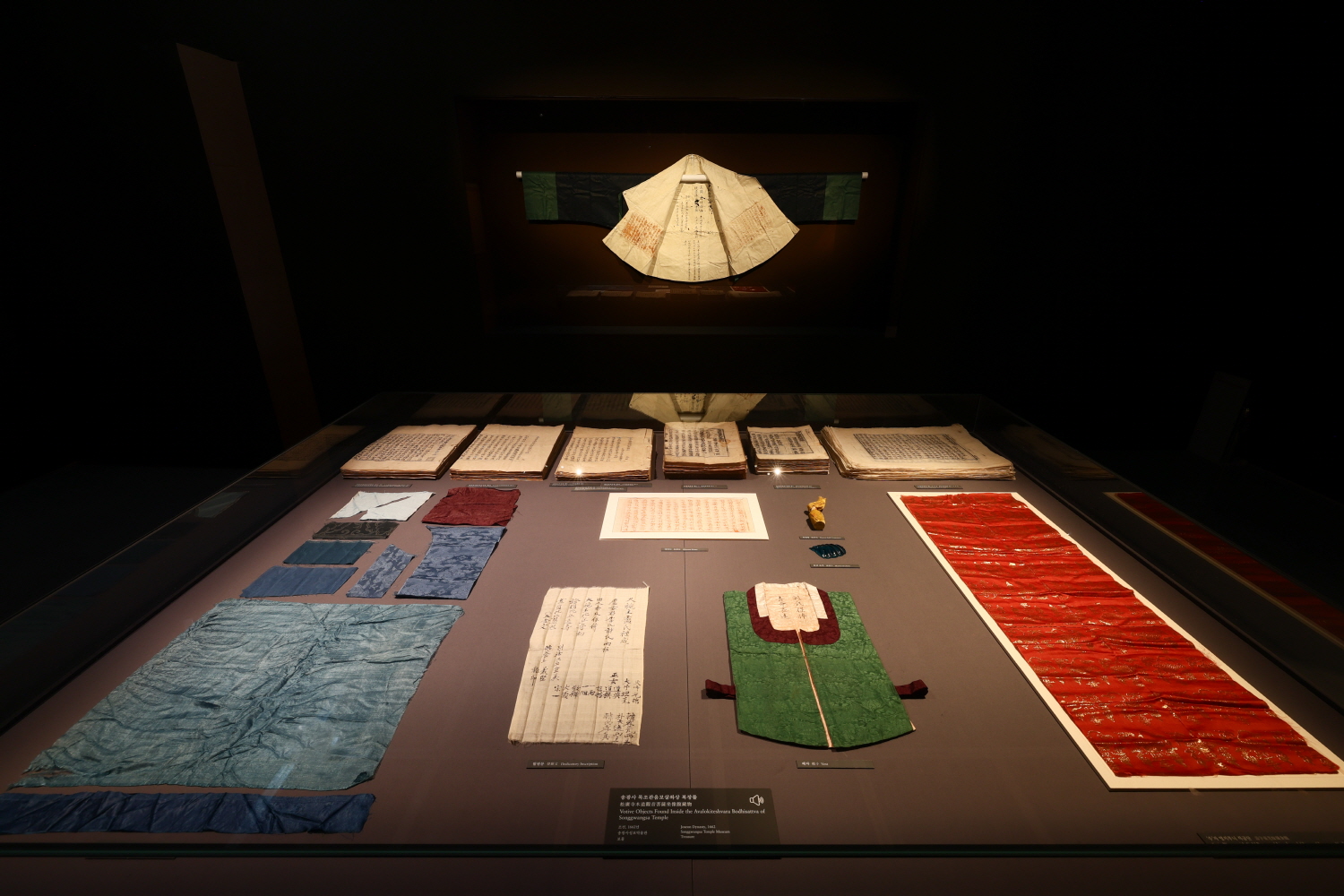SPACE May 2024 (No. 678)

Exhibition view of Section 2 of Part 1, ‘Avalokiteshvara: Changing Bodies, Changing Genders’ / Image courtesy of Hoam Museum of Art

Exhibition view of Section 3 of Part 2, ‘Women’s Work, Devotion in Every Stitch’ / Image courtesy of Hoam Museum of Art
What significance has Buddhism had for women, and what significance have women had for Buddhism? The Hoam Museum of Art hosts a major exhibition titled ‘Unsullied, Like a Lotus in Mud’ offering a gendered perspective on East Asian Buddhist art. This is the first exhibition globally to focus on women within the context of Buddhist art. It brings together 92 Buddhist art objects from Korea, China, and Japan, from across the world, to explore women’s agonies, wishes, and contributions. These artworks reveal appreciations and aspects of women not found in official histories or Buddhist literature. The exhibition is divided into two parts: Part 1 ‘Reemerging Images of Buddhist Women’ exploring depictions of women in Buddhist art, while Part 2 ‘Women’s Religious Vows and Practices’ highlights women as patrons and creators of Buddhist art.
The exhibition space was planned in collaboration with Kang Yerin (professor, Seoul National University) + SoA. After a major renovation last year involving YI ARCHITECTURE & Interior Design Lab, the newly reopened Hoam Museum of Art adapts its exhibition environment to each show, with no fixed showcases. This time, meticulous effort was made to create a space that not only interprets Buddhist architecture from a women’s perspective within a traditional society but also allows for closer examination of the intricate details of the artworks.
The exhibition begins in a spherical space reminiscent of a mother’s womb, reflecting the predominant depiction of women in Buddhist art as mothers. Visitors can see Queen Maya, Shakyamuni’s mother, portrayed significantly in The Eight Great Events of Buddha’s Life (Joseon Dynasty, 1725) and depicted majestically in The Birth of Shakyamuni (Joseon Dynasty, fifteenth century). Following this, the space transitions to the emanation bodies of Avalokitesvara Bodhisattva and the guardian goddesses, who have a distinct identity as female deities, represented through various Buddhist paintings and sculptures. Part 1 thus guides visitors to consider how past societies viewed women.
Part 2 uncovers the devotion behind the splendor of Buddhist art objects, revealing the complex identity of women in Buddhism— which taught that while all beings could become Buddhas, women could not achieve enlightenment in their female form. Nevertheless, medieval East Asian women aspired to transcend societal and institutional restrictions to achieve Buddhahood. Highlighting their struggles, the Illuminated Manuscripts of the Lotus Sutra, Volumes 1 – 7 (Goryeo Dynasty, 1345), have been displayed for the first time to the public in this exhibition. The final section of Part 2 reexamines embroidery and clothing, traditionally seen as ‘women’s work’, from an artistic perspective. Embroidery, often crafted using hair and taking years to complete, emerges as a unique genre of Buddhist art that manifests women’s agency. Examples include embroidered vows inside newly sewn jeogori (Korean traditional jacket), revealing the deep wishes and determination of the women of that time.
The exhibition’s title, ‘Unsullied, Like a Lotus in Mud’, quotes a line from the Sutta Nipata. After touring the exhibition, visitors can wander the museum garden Heewon designed by Jung Youngsun (refer to pp. 82 – 91), filled with the intense fragrance of plum blossoms, and recall the women who, like the lotus unsullied by the mud, rise above their surroundings. The exhibition runs until June 16, with a free shuttle bus available during the exhibition period between Leeum Museum of Art and Hoam Museum of Art via online reservation.





